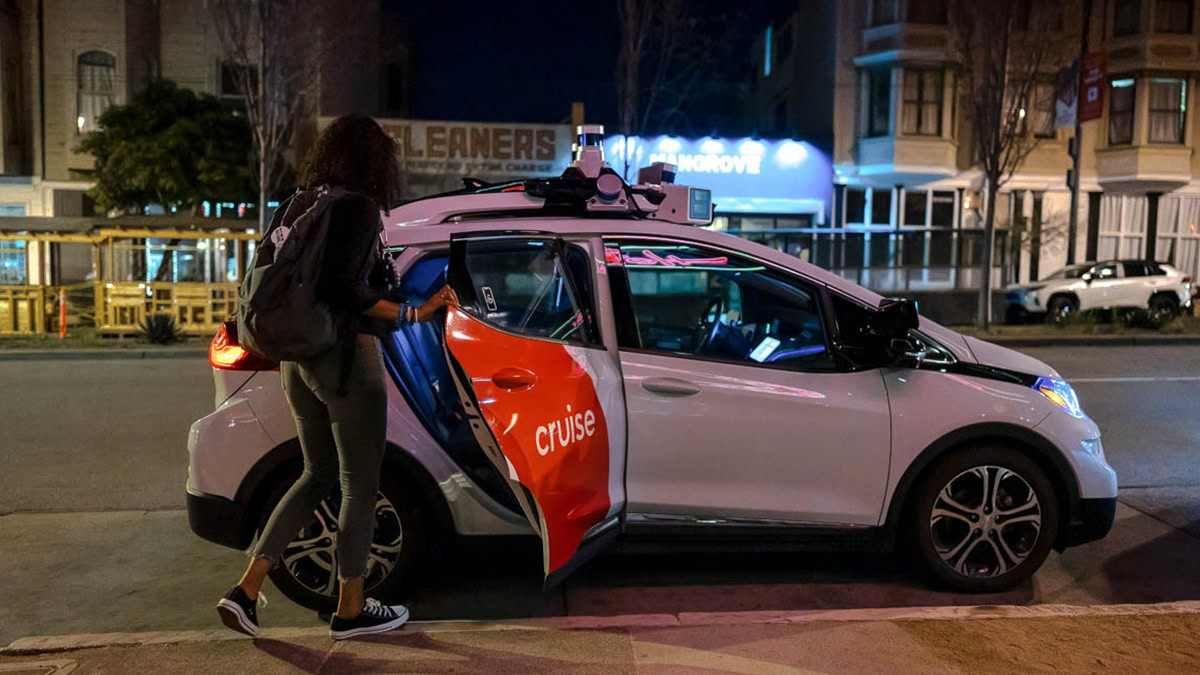Affiliate links on Android Authority may earn us a commission. Learn more.
Daily Authority: 🤖 Cruise takes SF
Published onJune 3, 2022

⚡ Good morning! Read on for optical fiber magic.
Cruising in SF
Robotaxis are really here! Cruise, the autonomous vehicle unit of General Motors, now has approval to offer a passenger service in San Francisco.
- The deal is they can only do 30mph (48km), and operate between 10 PM and 6 AM, in an expanded zone of SF though that’s only a rough map.
- Cruise has been offering free driverless rides in its Chevrolet Bolts but now it can charge for the services: paying the robot to take you from A to B.
- There’s a fleet of 30 cars allowed.
- Cruise told TechCrunchit currently “offers driverless rides for members of the public in about 70% of the city.”
- Cruise becomes the first and only autonomous vehicle company in the city to operate commercially.
- MIT robotics professor Rodney Brooks wrote a blog post this week about his experience, basically saying good things but added: “…please don’t make the mistake of thinking that an MVP means that mass adoption is just around the corner. We have a ways to go yet, and mass adoption might not be in the form of one-for-one replacement of human driving that has driven this dream for the last decade or more.”
So, Cruise marches ahead. What’s up with the rest of the industry? The competition:
- Waymo has similar approvals in SF but still needs to have a human safety operator present, even if they’re not doing much, but has more freedom in Arizona, where it is operating like Cruise in a city near Phoenix.
- Zoox, an Amazon subsidiary, is also fixated on San Francisco and has a custom-designed vehicle it showed off recently but isn’t at this level yet.
- Argo, backed by Ford and VW, is operating in Austin and Miami with a service limited to employees.
- Tesla is beta testing its software on cars people own and still not using Lidar.
- Elsewhere and less robotaxi, Mercedes-Benz is selling self-driving vehicles in Germany, though the real detail is “conditionally automated driving,” with it only able to be used in what essentially is low-speed points of highways, such as in traffic.
- In Japan, Honda was granted approval by the government for its “Honda Sensing Elite,” self-driving tech back in March 2021, but is only leasing vehicles to customers. That is still mostly limited to traffic on highways as well.
- And Intel’s Mobileye division, based in Israel, was at last check still set to IPO despite current stock market woes.
Roundup
😴 Diablo Immortal launch stalls on Exynos chips: weird bugs that Blizzard is working on fixing (Android Authority).
👉 These FCC docs show the OPPO rebranding process OnePlus refuses to talk about (Android Authority).
💰 Amazon finally launches an invite system for buying a PS5 or Xbox Series X (Android Authority).
📶 Google’s new Wi-Fi service expands coverage, eats into your data cap (Android Authority).
🎮 Sony’s latest State of Play: Street Fighter 6, Final Fantasy XVI, new PC ports, and teases of PlayStation VR2 (Ars Technica).
📺 Netflix is finally taking a page from the rest of Hollywood: new plan to make “bigger movies” at a less “gluttonous pace,” and less “vanity” projects like The Irishman (The Verge).
🚰 Toyota’s prototype ‘cartridge’ is a way to make hydrogen portable (Engadget).
🔋 My buddy TechAltar has a good view on batteries in smartphones: Why batteries have improved, but why battery life isn’t a lot different, and what the next battery breakthrough might be (YouTube).
🚀 NASA just bought the rest of the space station crew flights from SpaceX: five more makes 10 SpaceX crewed flights, plus six with Boeing, all the way through to 2030 (Ars Technica).
🎬 The multifarious multiplexity of Taika Waititi. (Wired).
🐶 “Dogs can smell COVID infections in patients, with as much accuracy as a PCR test. What’s stopping us from building a machine that ‘smells’ the patients and detects it as well, if not better, than a dog?” (r/askscience). (“The short answer is that it’s really, really, really difficult.”)
Friday Fun

Giddy up! Gizmodo reports researchers in Japan just set a new fiber optic data transmission record:
- Using a multi-core fiber optic cable, data was sent at a speed of 1.02 petabits per second over a distance of 51.7km.
- That’s the equivalent of sending 127,500 GB of data every second.
- Or: 10 million channels of 8K broadcasting per second. Crazy.
- Even better: It is a technique “that’s compatible with existing cable infrastructure, meaning a real-world implementation is entirely possible, and not just limited to a laboratory setting.”
- The only catch is the fibers themselves are the limit: the transceivers can handle it, but new glass would need to be laid down, so it’s not quite plug-and-play, exactly. But still.
Now all of that is fun, but please, let’s take a moment to enjoy this completely alien list of words from the study:
- “In this experiment, by broadening the Raman amplification bandwidth to the full S-band and using customized thulium-doped fiber amplifiers (TDFAs) for S-band and extended L-band erbium-doped fiber amplifiers (EDFAs), we were able to use a record 20 THz optical spectrum with total of 801 x 25 GHz spaced wavelength channels, each with dual-polarization-256 QAM modulation for high spectral density in all wavelength bands.
- Thulium! Raman amplification! Erbium! Great great stuff here.
Have a great weekend,
Tristan Rayner, Senior Editor.
